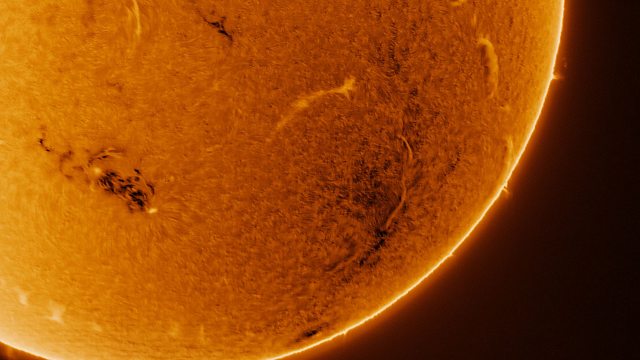Sun Grazing
New insights into the future of vaccination, NASA’s Parker Solar Probe, and a trip to the dawn of complex life, exploring questions about what tipped evolution into top gear.
New insights into how our skin learns to tolerate and co-exist with bacteria on its surface show great potential for the development of simpler and less invasive vaccines. Stanford University’s Djenet Bousbaine has published two papers in Nature detailing the microbiological research and mouse vaccination experiments that could change the future of immunisation.
The Sun is the hardest place in the Solar System to reach. But by the time the next edition of Science in Action is on air, NASA’s Parker Solar Probe will have swooped through the scorching corona layer of the Sun, re-emerged, and be readying itself to relay the details of magnetic fields and particle storms to the team. NASA Helioscience deputy manager, Nicky Rayl, reveals all about the mission and explains why the Parker Probe’s future looks bright.
And a trip half a billion years back - and then some - to the dawn of complex life here on Earth. Microfossil hunter Shuhai Xiao, from Virginia Polytechnic Institute and State University, has been compiling a single statistical database to better understand evolution during the so-called ‘boring billion’, why subsequent changes on the planet triggered a new diversity of species to emerge, and how the interplay between biology and geology has paved the way for modern life as we know it.
Presenter: Roland Pease
Producer: Alex Mansfield
Assistant Producer: William Hornbrook
Production Coordinator: Jana Bennett-Holesworth
(Image: Solar Activity Captured in H-Alpha Filter. Credit: Manuel Romano/NurPhoto via Getty Images.)
Last on
More episodes
Featured
-
.
Broadcasts
- Thu 19 Dec 2024 20:32GMT����ý World Service Online, Americas and the Caribbean, UK DAB/Freeview & Europe and the Middle East only
- Thu 19 Dec 2024 21:32GMT����ý World Service except Online, Americas and the Caribbean, Europe and the Middle East & UK DAB/Freeview
- Fri 20 Dec 2024 05:32GMT����ý World Service Australasia, Americas and the Caribbean, South Asia & East Asia only
- Fri 20 Dec 2024 09:32GMT����ý World Service
- Fri 20 Dec 2024 13:32GMT����ý World Service East and Southern Africa, News Internet & West and Central Africa only
Podcast
-
![]()
Science In Action
The ����ý brings you all the week's science news.


